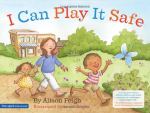 My first grade sexual abuse prevention lessons revisit and build upon the skills and concepts covered in kindergarten. (See Kindergarten Lessons for Sexual Abuse Prevention.) For this series of three lessons you will need the books I Can Play It Safe by Alison Feigh, Your Body Belongs to You by Cornelia Maude Spelman, and Do You Have a Secret? by Jennifer Moore-Mallinos. For the activities you will also need some coloring pages, a Good Secrets Box, and Secrets Cards. (Find links for these resources below.)
My first grade sexual abuse prevention lessons revisit and build upon the skills and concepts covered in kindergarten. (See Kindergarten Lessons for Sexual Abuse Prevention.) For this series of three lessons you will need the books I Can Play It Safe by Alison Feigh, Your Body Belongs to You by Cornelia Maude Spelman, and Do You Have a Secret? by Jennifer Moore-Mallinos. For the activities you will also need some coloring pages, a Good Secrets Box, and Secrets Cards. (Find links for these resources below.)
It will be helpful for you to familiarize yourself with the foundational information about how to teach sexual abuse prevention by reading the posts Teaching Kids How to Tell About Sexual Abuse and Teaching Kids to Recognize Grooming before you teach the lessons. You can link to all my posts about sexual abuse prevention lessons and resources by visiting A Collection of Sexual Abuse Prevention Resources.
Lesson 1 covers several personal safety concepts: checking with a parent or caregiver before going anywhere or when asked to help with an adult problem; trusting the “uh-oh” or “yucky” feeling; the importance of telling if someone asks you to keep a secret from your parents or touches you in a way that makes you feel uncomfortable; and identifying adults you can trust to help you. The lesson consists of reading I Can Play It Safe; introducing and practicing the “Say NO (if you can), GO, and TELL” and “Check First” scripts; and coloring No, Go, and Tell and Check First papers.
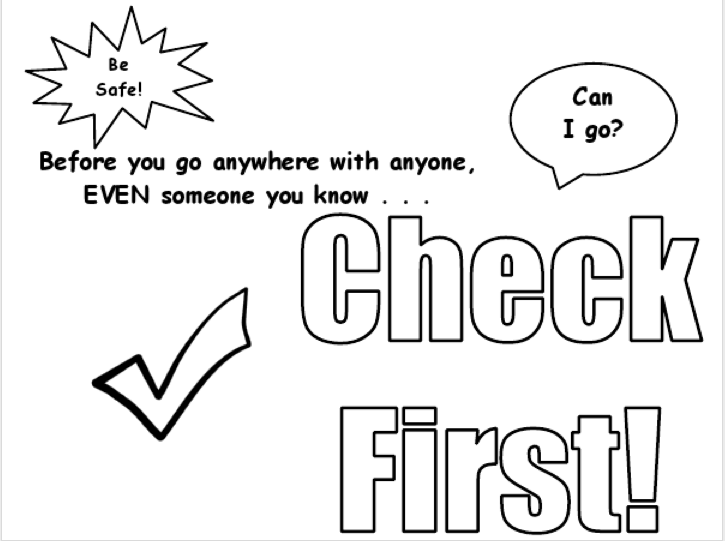
Lesson 2 specifically focuses on safety related to private parts. Activities include reading Your Body Belongs to You, identifying trusted adults, and a drawing activity. This lesson is similar to one of the kindergarten lessons – it uses the same book that was read in kindergarten, but instead of doing role-play practice after the book, you discuss what to do in given scenarios as a whole class. See the kindergarten sexual abuse prevention lesson for more details.
Lesson 3 covers how to tell the difference between good (happy) secrets and bad (uncomfortable) secrets, and the importance of telling secrets that make you feel uncomfortable, yucky, or unsafe. Activities include reading Do You Have a Secret? and role-playing telling an adult about an unsafe secret. You can find details about how to teach this lesson and links to the Secret Cards here.
It is important that ALL students participate in the role-plays and discussions. I always choose an eager and expressive kid to start the role-plays to model what to do and to show that it is a safe and fun activity, and then have each student take a turn. The truly hesitant can wait for a few others to go first, but everyone needs to practice so that they know what to do if this ever happens to them and so that their classmates can learn by watching them. I have never had any child be so uncomfortable that he/she refuses to participate. When I have students who I know have been abused, I talk to them ahead of time and show them the books and activities. I don’t always have this information, though, and these lessons have been safe and comfortable for everyone. After introducing the lessons, but before going any further, I always give these directions:
“We’re not going to talk about anything that really happened or almost happened to us or anything that really happened or almost happened to anyone we know. It’s important to talk to a grown-up when something unsafe happens, but we talk about that privately, only one kid at a time.”
These lessons are also appropriate to use with individuals, for review, or for older students whose developmental level makes these lessons appropriate. Whenever possible I provide make-up lessons in small groups or individually for any students who miss them in the classroom. Additional coloring and drawing prompt pages to use in any of these lessons can be found in the Very Important People coloring book.
First Grade Personal Safety Lessons: Objectives, ASCA Standards, Activities, and Materials
Objective: Students will be able to:
- understand that they should check first with a parent or caregiver before going anywhere.
- understand that “uh-oh” feelings warn them that they need to ask for help.
- identify which areas of their bodies are private.
- understand that they have the right to say who touches their body.
- identify whether a touch is a “good” or “uncomfortable” touch.
- understand how to avoid and refuse uncomfortable touches.
- identify the difference between good/happy and bad/unsafe secrets.
- understand that they must tell an adult about any uncomfortable touch or unsafe secrets.
- identify adults that they can trust and talk to.
- understand how to tell an adult about anything that makes them feel uncomfortable.
ASCA National Standards
Personal/Social Domain
Standard A: Students will acquire the knowledge, attitudes, and interpersonal skills to help them understand and respect self and others. Competency A1: Acquire Self-Knowledge
- PS:A1.7: recognize personal boundaries, rights, and privacy needs
Standard C: Students will understand safety and survival skills. Competency C1: Acquire Personal Safety Skills
- PS:C1.3: learn about the differences between appropriate and inappropriate physical contact
- PS:C1.4: demonstrate the ability to set boundaries, rights, and personal privacy
- PS:C1.6: identify resource people in the school and community, and know how to seek their help
Lessons/Materials/Activities:
Lesson 1: Safety with People we Know and Strangers
Materials: I Can Play It Safe, No, Go, & Tell paper, Check First paper
- Read and Discuss: I Can Play It Safe. Discuss concepts on each page: check first, trust “uh-oh” feelings, tell adults about “uh-oh” feelings, secrets, and touches, adults you trust keep you safe. Explain that sometimes it can be hard to say “no,” and it’s okay if kids can’t. Give examples of ways to say “no” assertively or show “No” such as moving away, saying you have to go do something, etc.
- Practice: No, Go, & Tell and Check First concepts by posing scenarios to whole group. Responses to scenarios should be “Say or show No, Go, and Tell” or “Check First.”
- Activity: Color No, Go, & Tell and Check First papers.
Lesson 2. Private Parts of Body / Telling an Adult
Materials: Your Body Is Your Own, Adults I Can Trust to Help Me paper
- Review: No (if you can), Go, & Tell concept.
- Read (or review) and Discuss: Your Body Is Your Own. Use discussion points below while reading or after reviewing book.
- Discuss: Private parts are the parts of our bodies that are covered by a bathing suit
- Discuss: No one should touch the private parts of your body unless it’s to check quickly to help you clean up or if your private parts hurt. This would be a grown-up like a parent or a doctor or nurse. If a doctor or nurse was checking you, your mom or dad or whoever usually takes you to the doctor would be there.
- Discuss: Tell an adult you trust if anyone: touches the private parts of your body, tries to touch the private parts of your body, makes you touch the private parts of their body, tries to make you touch the private parts of their body.
- Discuss: Always tell a grown-up about touching private parts, even if the person touching: tells you not to tell, says you’ll get in trouble, says that no one will believe you, says they will hurt you.If the grown-up you tell doesn’t believe you, tell another grown-up.
- Scenarios: Ask questions about what kids should do in scenarios that involve touching – ‘Tell a grown-up!” You can find sample scenarios about touching under the heading “No Secrets About Touching” here.
- Share: Each student identifies a grown-up they would tell at school and outside of school if someone tried to/did touch their private parts or tried to/did tell the child to touch their private parts.
- Activity: Draw picture of adults at school and outside of school who you trust to help you
Lesson 3: Good/Happy and Bad/Uncomfortable Secrets
Materials: Do You Have a Secret?, Good Secrets Box, Secret Cards
- Read: Do You Have a Secret?
- Discuss: Good/happy secrets are secrets that make you and others (like your teacher or mom) happy. Good/happy secrets are only secrets for a little while. Bad/uncomfortable secrets give you a yucky or “uh-oh” feeling and would make others upset). All secrets about private parts or threats are bad/uncomfortable secrets. You ALWAYS have to tell about bad/uncomfortable secrets.
- Group Activity: Each student comes to the front of the group and takes a secret scenario card. If it is a bad/uncomfortable secret they practice telling counselor or teacher the secret. If it is a good/happy secret they put the secret in the Good Secret box. Students who had good secrets get a second turn with a bad secret so that they can practice. The good secrets come out of the box at the end of the class because good secrets are only secret for a little while.

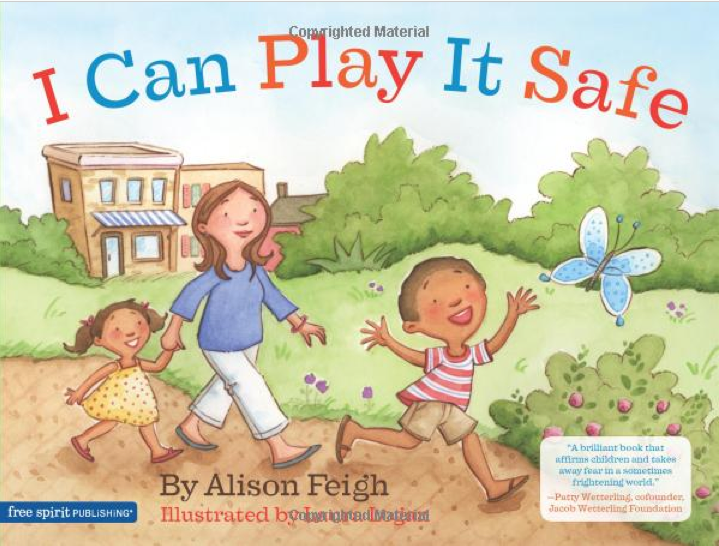
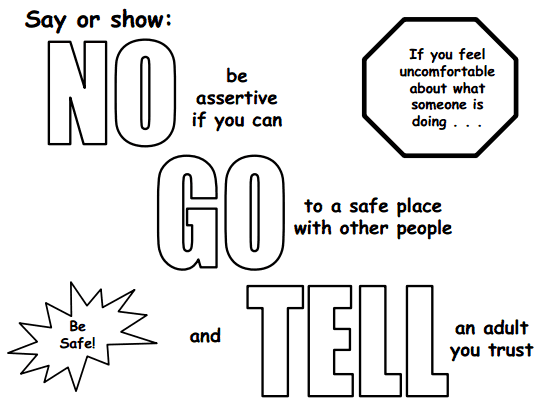
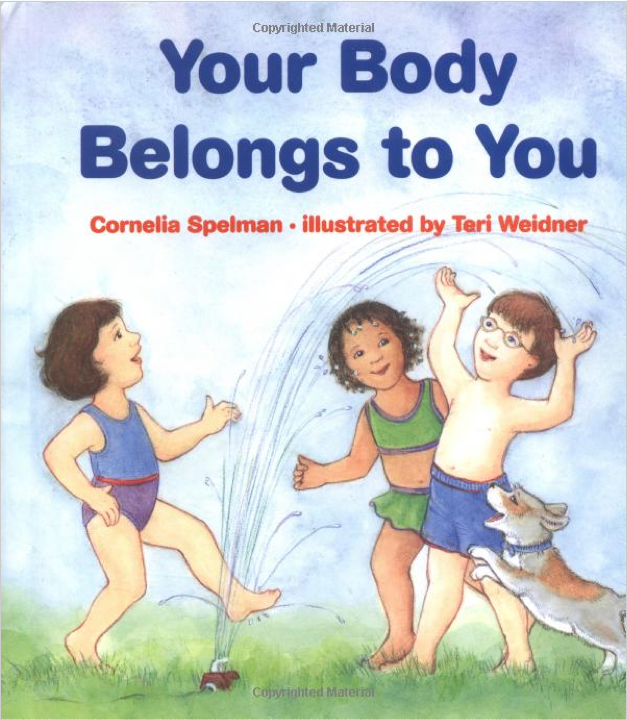
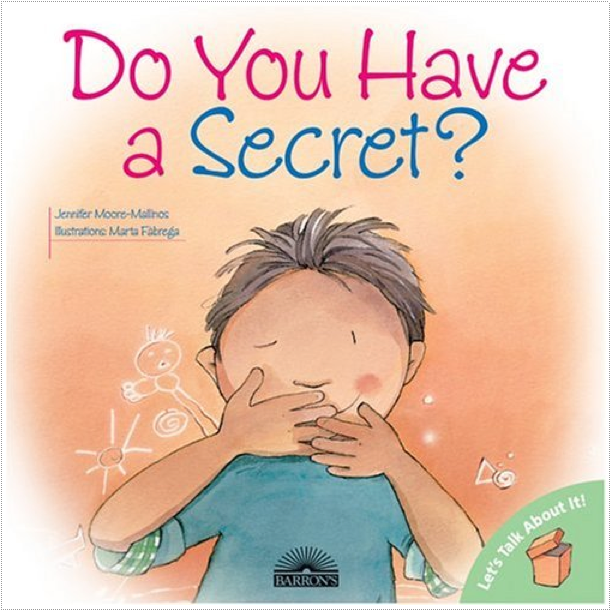
Trackbacks/Pingbacks